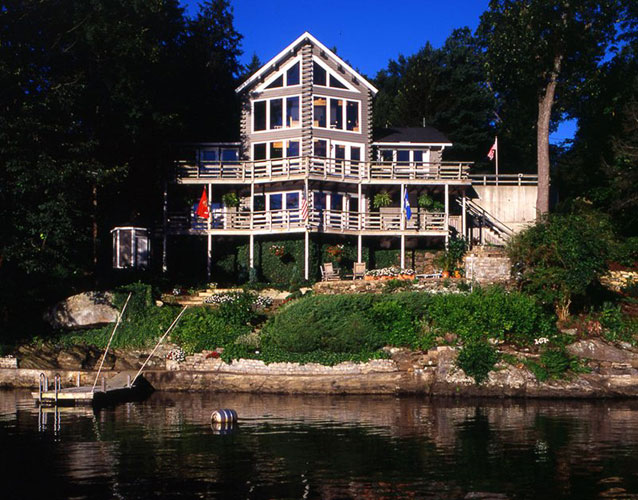Innovative Materials for Building a Log Cabin
Posted by Ward Cedar Log Homes in Home Design/Square Footage Log HomesInnovative Materials for Building a Log Cabin
Log cabins are one of the most popular vacation homes, especially when built by the owners. This type of rustic-appearing housing allows your property to flow seamlessly from lake to building and creates an aesthetic that many find nostalgic.
These are some of the best materials you should consider using for this structure to look good and last longer. Although all of these are useful, you should mix and match to create the cabin of your dreams.
Newer Types of Insulation

Most log cabins rely heavily on whatever type of insulation they have to ensure that they last longer and block out weather and moisture. So it's a good idea to consider beyond the below-grade insulation that many companies will try to sell you for this type of structure. For a good log cabin, the roof needs to have a tight seal, a vapor barrier, a batten frame to hold the insulation: and insulation you can trust this property with.
Many of the newer types of insulation are batt and roll, which can be put in without having to spray or fill a space. Ensure that whatever style you get is securely attached and protected from moisture.
The most innovative types of insulation currently on the market are wool and natural fibers, including bamboo fiber insulation that allows you to seal out the heat and moisture from your home without worrying about fiberglass getting into the air or allowing insect activity.
Liquid Applied Flashing
The flashing on your roof is what keeps out more moisture and insects than any other part of your building besides windows and doors. Liquid applied to flash will ensure it heavily seals and stops any gaps from occurring between your roof and other parts of your cabin. This will give you a more waterproof seal and will help keep the integrity of your building intact for longer.
Using A Kit Instead of Buying Pieces
Buying the parts of your building as you construct it can be expensive. This entails purchasing item by item, cutting things on your own, and ensuring that you don't make costly mistakes. Not only are mistakes expensive to fix in some cases, but they're also wasteful, which can be a large hit for someone who's trying to build as sustainably as possible. However, you can still customize your cabin while using a kit, and it will save you a lot of time and stress.
Green Energy Options
Many who opt for cabins do so because they want to feel more connected to the outdoors. If this is part of your ideal cabin, it’s a good idea to consider what types of green options you can add. Consider things like the materials of your perforated soffit panels, how you attach them, and how you source your items.
To take this further, consider adding green energy options. This could mean installing solar energy, which will also benefit you if your property is off of the grid or has a lackluster source of energy, or it could mean considering other power sources that can be utilized in your area. The fortunate thing about most green energy options is that they make keeping your cabin off the grid easier and allow for a property to be as far from civilization as you want to be.
Northern White Cedar
Picking what wood you build your cabin out of is a big decision that will impact how long your cabin lasts and what other perks you can get out of its construction. Using Northern White Cedar as your wood will help your cabin fight back against rot or aging and keep insects at bay. Beyond that, it's one of nature's best woods and has an R-value rating, meaning that it does a better job at insulating and encapsulating temperatures than many other kinds of wood. This will give you an energy-efficient cabin that will last longer, look better, and protect the interior from rot and insect life.
Creative Heating Options
How do you plan on heating your cabin? If you're in an area that dips below fifty degrees, it's a good idea to have some heating in-store to ensure that you're comfortable while enjoying the space. Although many go for putting in a small fireplace, alternative heating solutions don't risk your building fire. Instead, consider using a space heater or even putting in a small HVAC system that will also ensure that your cabin stays cool in the summer.
Your Log Cabin Doesn’t Have to be Stuck in the 1800s
It's important to think about what types of materials will make your log cabin ready for whatever weather or external forces may happen where you're building it. There's no need for your cabin to stick to traditions that will not allow it to last: put work into how it's made, and it'll last far longer.
Todd Gillman is the content director for the Innovative Building Materials blog and a content writer for the building materials industry. He is focused on helping fellow homeowners, contractors, and architects discover materials and methods of construction that save money, improve energy efficiency, and increase property value.


Post Your Comment